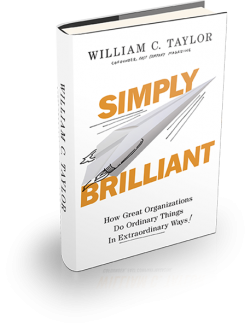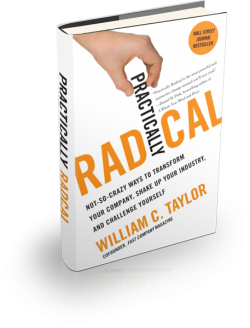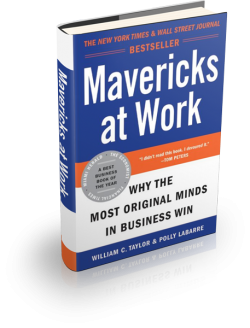I am very excited to announce that the paperback edition of Practically Radical has just been released by my friends at William Morrow. I’ve updated all of the case-study material for the paperback edition, and I’ve added an all-new “Work Book” of questions and exercises designed to help individual leaders change the game in their organizations. I’m just as excited to announce that the original hardcover edition of Practically Radical has gone back to press for what I think is the book’s fifth major print run. All I can say is wow—and thanks! It has been so gratifying to experience all the enthusiasm and support for the book over the last 18 months.
And speaking of the last 18 months…Since the publication of Practically Radical, I’ve had the chance to share its themes, advice, and case studies with audiences of executives, technologists, and entrepreneurs from around the world. What a long, strange, wonderful trip it’s been—from urging on hundreds of Russian entrepreneurs in a movie theater in Moscow, to swapping ideas and business plans with advertising hotshots and startup founders on a rooftop in Berlin, to addressing thousands of human-resource professionals in a vast convention center in Toronto, to being grilled by engineers and technologists from one of the world’s leading aerospace companies—literally an auditorium filled with rocket scientists.
Indeed, perhaps the greatest reward for having spent months and years honing the messages for this book is the chance to then spend months and years interacting with people who are interested in those messages. Over time, though, I’ve sensed a change in what these change agents want to hear about—or, more precisely, what they want to talk about. Increasingly, I’m being asked not just to present my ideas and themes, but also to help leaders at every level figure out how those ideas and themes apply to their problems—that is, how to put the ideas in Practically Radical to work inside their organizations and in their careers.
That’s why, for the paperback, I assembled the Practically Radical Work Book—questions that define the core challenges of change for leaders in any field, along with exercises to meet those challenges and do the hard work of making long-lasting progress in fast-moving times. I’ve always thought that the value of a book aimed at leaders who want to make a difference has less to do with the precision of the arguments it makes than with the energy of the conversations it unleashes and the originality of the answers it inspires. Here’s hoping the book, in whatever form you encounter it, unleashes energy and inspire answers for you and your colleagues.
Thanks again for the support!


